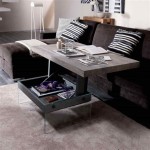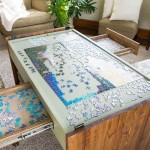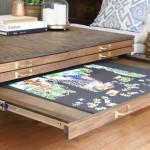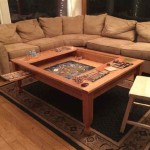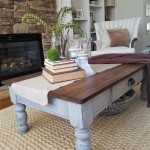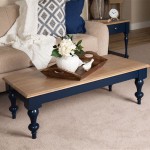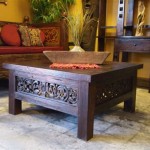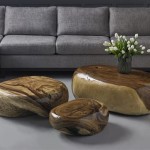How To Make A Round Table Top From Pallet Wood
Creating a round tabletop from reclaimed pallet wood offers a cost-effective and environmentally friendly way to add a rustic touch to any space. This project requires basic woodworking skills and tools, along with some patience and attention to detail.
Gathering Materials and Tools: Before beginning, ensure all necessary materials and tools are readily available. This will streamline the construction process and prevent unnecessary interruptions. The primary material is, of course, pallet wood. The amount needed will depend on the desired table size. Aim for a variety of widths and thicknesses for a more interesting final product. Other necessary materials include wood glue, wood screws, sandpaper (varying grits), and a finish of choice (e.g., polyurethane, stain, paint). The essential tools for this project include a saw (circular saw, jigsaw, or hand saw), a drill with driver bits, a sander (orbital or belt sander preferred), measuring tape, a pencil, safety glasses, and work gloves.
Disassembling the Pallets: Carefully dismantle the pallets using a pry bar and hammer or a reciprocating saw. Avoid damaging the wood as much as possible, as this will minimize the amount of sanding and repair work later. Remove all nails and staples thoroughly.
Preparing the Wood: Once the pallets are disassembled, select the best pieces for the tabletop. Look for boards with minimal damage and interesting grain patterns. Cut the boards into roughly equal lengths, slightly longer than the desired radius of the tabletop. The exact length will depend on the layout chosen (discussed in the next step). Plane or sand the boards to a uniform thickness. This ensures a level and stable tabletop surface.
Creating the Tabletop Blank: There are several methods for creating a round tabletop from rectangular boards. One common method involves arranging the boards edge-to-edge, creating a large rectangular surface. This requires careful planning to ensure the grain patterns flow aesthetically. Secure the boards together edge-to-edge using wood glue and screws, ensuring the screws are countersunk. Another approach involves cutting the boards into smaller pieces and arranging them in a more mosaic-like pattern, creating a more intricate design. This method allows for more creativity and can be particularly effective with reclaimed wood's varied textures and colors. Regardless of the chosen method, the resulting rectangular piece forms the blank from which the round tabletop will be cut.
Cutting the Circle: After the glue has dried completely, mark the center of the rectangular blank. Using a string or compass, draw a circle with the desired radius. A jigsaw is the ideal tool for cutting the circle. Secure the blank firmly to a work surface and carefully follow the drawn line. A bandsaw can also be used for this step, providing a smoother cut, particularly for thicker blanks. Take precautions to avoid splitting the wood by cutting slowly and steadily.
Sanding and Finishing: Once the circular tabletop is cut, sand the edges and surface thoroughly. Start with a coarser grit sandpaper (e.g., 80-grit) to remove any rough spots and imperfections. Gradually move to finer grits (e.g., 150-grit, 220-grit) for a smooth, even finish. Pay particular attention to the edges of the tabletop, rounding them slightly to prevent splintering. After sanding, remove all dust with a tack cloth or vacuum.
Applying the Finish: The choice of finish is a matter of personal preference and the desired aesthetic. A clear polyurethane finish will protect the wood and enhance its natural beauty. A stain can be applied before the polyurethane to add color and further emphasize the wood grain. Paint can also be used for a more contemporary look. Apply the chosen finish according to the manufacturer's instructions, typically involving multiple coats with light sanding between each coat. This ensures a durable and even finish.
Attaching to a Base: Once the finish has dried completely, the tabletop can be attached to a base. Pre-made table bases are readily available, or a custom base can be built from wood or metal. The method of attachment will depend on the chosen base design. Common methods involve using screws, bolts, or mounting plates. Ensure the tabletop is securely fastened to the base for stability.
Creating a round tabletop from pallet wood involves several steps requiring careful execution. With proper planning and execution, this project yields a unique and visually appealing piece of furniture.

How To Make Pallet Wood Into A Round Circle Shape Fox Hollow Cottage

Round Top Table Made Of Pallets Diy Wood Patio

How To Make Pallet Wood Into A Round Circle Shape Fox Hollow Cottage

Round Top Timothy Table Tutorial Lazy Guy Diy

Round Pallet Wood Table Top

How To Make Pallet Wood Into A Round Circle Shape Pallets Projects Clocks

How To Build A Round Table Easy Steps

Round Top Table Made Of Pallets Diy Chevron Pallet Projects Furniture

How To Make Pallet Wood Into A Round Circle Shape Fox Hollow Cottage
Wood Pallet Table Diy A Beautiful Mess
Related Posts

